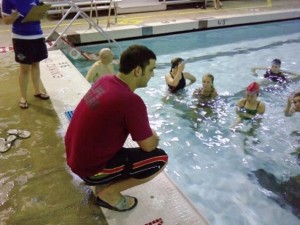Drowning is among the leading causes of death. Like many other causes of unintentional deaths, deaths due to drowning can actually be prevented with prompt and efficient first aid. Learn more about this silent killer through this article.
Unlike what people usually see in movies, drowning is often less dramatic. It can occur very quietly and quickly. So, this summer, parents need to know what signs to look out for.
Many of our preconceptions about a drowning scene are influenced by movies – usually with the drowning victim screaming their lungs out. And it’s impossible to miss out the hysterics of the situation.
The problem is that it’s all fiction. Just like any other well-rehearsed, unbelievable action feats, drowning in movies is nothing close to the real thing. In fact, it can be the other way around.
Anyone who gets in trouble in the water will display an Instinctive Drowning Response – and unfortunately it’s nothing like what most of us would expect.
Natural response to drowning: the truth
- It’s non-dramatic
Unlike the histrionic and dramatic depictions in the silver screen, a drowning person will instinctively spread his arms and paddle down while attempting to stay afloat. While the most logical response would be to wave and ask for help, it’s somewhat impossible.
- It’s quiet
A drowning person will dip below the surface and briefly pop up his head again. Instinctively the person struggles to inhale and exhale to maintain breathing. Yelling, or even speaking, is the least a person can do.
- It occurs in seconds
A person can only stay afloat for up 20 to 60 seconds before finally being drowned. However, children have shorter survivability time, so it is essential to recognize signs of drowning right away.
A person who is shouting for help and splashing his arms about (known as aquatic distress) definitely needs immediate help. But the time to seriously worry is when they become quiet. It can be quite difficult to recognize drowning in young children because they may only seem like doing the dog paddle before they succumb. Some children may even look like they are just larking about in the water.
When you bring your child to the beach or swimming, be sure to know the eight warning signs of drowning:
- Head lower than the surface, mouth at surface level.
- Head tilt backward with mouth open.
- Closed or glassy eyes that are unable to focus.
- Absence of leg kicks.
- Hair falls through the eyes or forehead for long periods.
- Hyperventilating or grasping for breath.
- Does not respond when asked: “Are you okay?”
- Sudden lack of movement or silence.
If you suspect someone is drowning, immediately call the help of trained lifeguards or authorities. Use flotation devices when attempting to rescue the victim. If you have pulled out someone from the water and they are not breathing or unconscious, initiate rescue breathing. Aside from learning how to recognize drowning, you should also know how to provide CPR and rescue breathing. Taking basic first aid course can help in preventing this silent killer.

